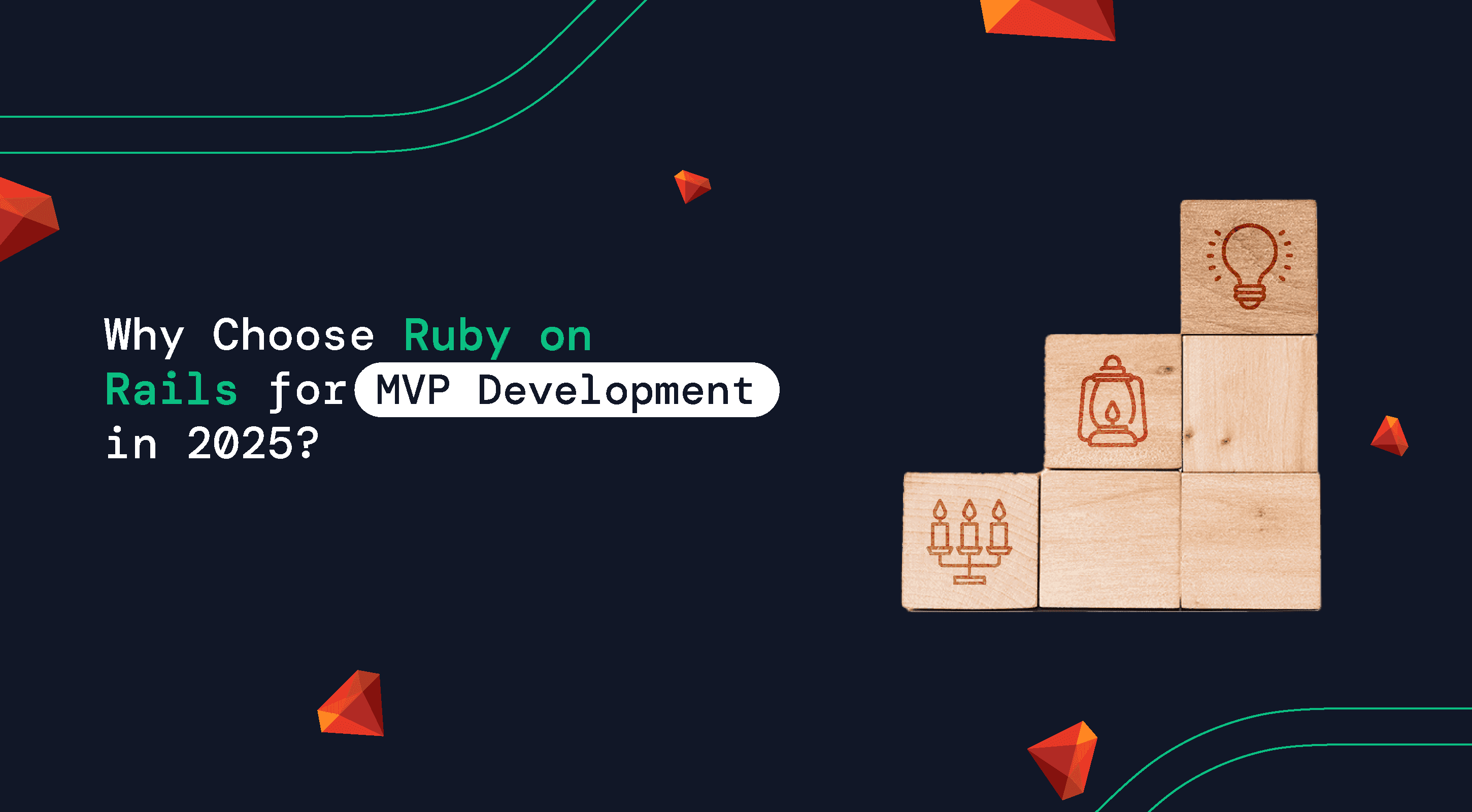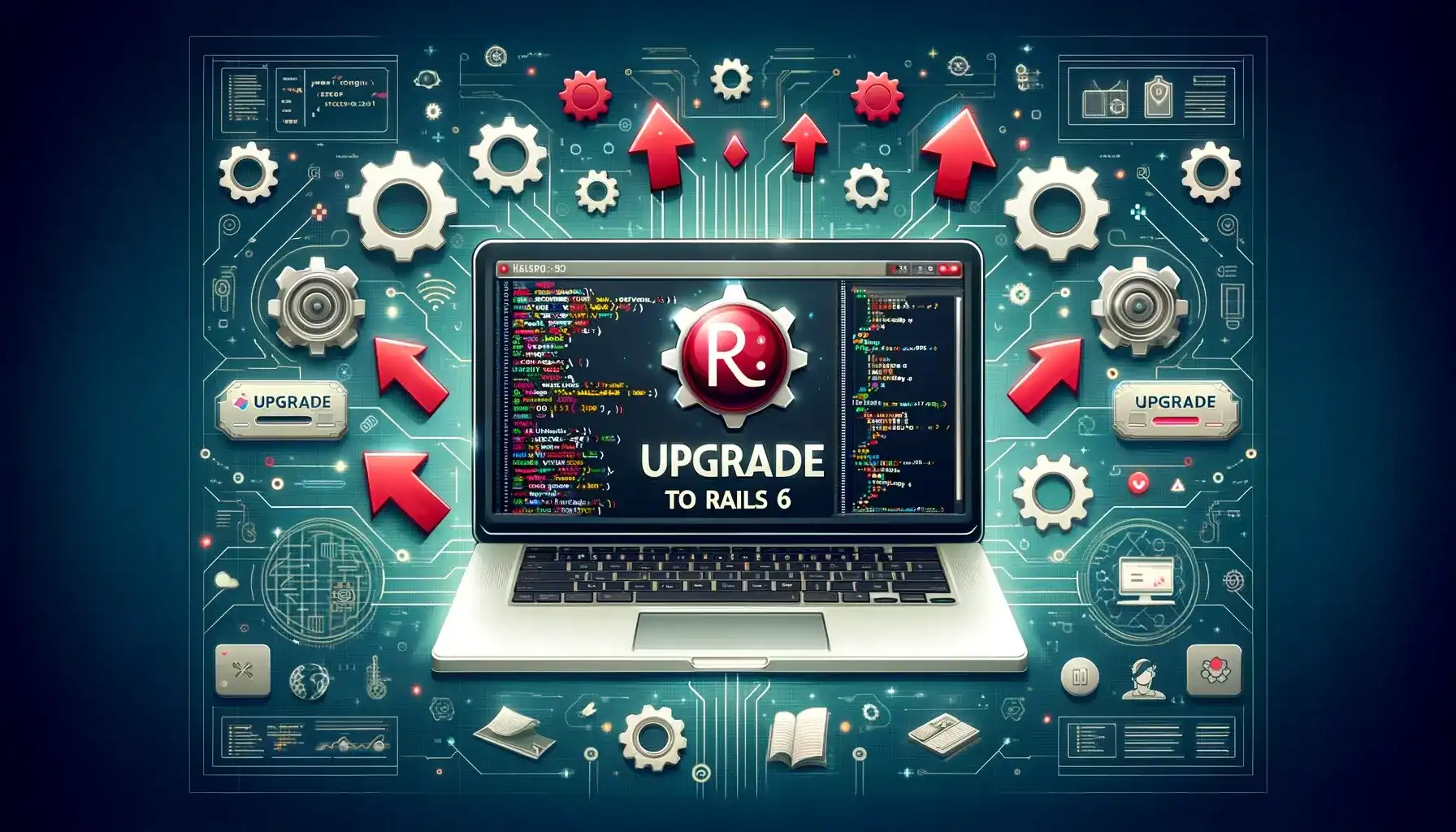Ruby on Rails: The Best Choice for MVPs in 2025
Learn why placing your bet on Ruby on Rails for MVP development is a smart move in 2025!

Pichandal
Technical Content Writer

In 2025, while AI reshapes entire industries on one end, global tariff shifts and economic turbulence are shaking things up on the other. For founders and product teams, the pressure to bring ideas to market quickly, validate early, and adapt constantly is higher than ever.
When it comes to launching a Minimum Viable Product (MVP), speed matters. But what matters even more is placing the right bets from day one.
With a growing sea of frameworks, libraries, and no-code platforms, choosing the right stack for your MVP is more overwhelming than ever. One wrong call, and you could lose weeks to configuration issues, rewrites, or scaling limitations—right when your product starts gaining traction.
Amid all this volatility, Ruby on Rails might not be the flashiest tool in the room—but it remains one of the most battle-tested and pragmatic choices out there. With developers-friendly features, a mature ecosystem, and rapid development capabilities, Rails continues to be a go-to framework for teams that need to build fast and pivot even faster.
In this article, we’ll explore why MVPs are critical for businesses in 2025—and why Ruby on Rails still holds its ground as one of the best frameworks for MVPs.
MVPs in 2025: Fast, Lean, and High Stakes
According to Gartner, the failure rate of new products in tech is alarmingly high, with estimates ranging from 40% to 80%.
For product teams, this means that the stakes for building a successful MVP are at an all-time high.
Whether you're a startup chasing product-market fit or an enterprise team testing a new idea, aiming to innovate and stay competitive, the need for a successful MVP is non-negotiable. MVPs aren't just about testing an idea—they're about quickly validating your product’s value, de-risking investment, and laying the groundwork for future scaling.
Although the key goals of MVP development—speed, flexibility, and cost-efficiency—haven't changed, the tools and technologies available have evolved drastically.
The shift towards lean teams and cross-functional workflows is now the norm. New tools, like AI-assisted prototyping and no-code/low-code platforms, allow teams to design and deploy MVPs at lightning speed, without sacrificing the ability to pivot quickly based on real user feedback.
But even with these advancements, the core challenge remains: How fast can you build, iterate, and scale while minimizing risk? The difference between success and failure often hinges on the early decisions you make—and that’s where choosing the right framework matters.
Having delivered end-to-end Ruby on Rails services for over 18 years, we at RailsFactory strongly advocate for Ruby on Rails as the go-to choice for MVPs. Its balance of speed, flexibility, and developer-friendly features allows teams to move fast without compromising code quality or future scalability.
Why Choose Ruby on Rails for MVPs?

1. Fast Development with Built-in Tools and Conventions
For teams building an MVP under time pressure, every hour spent on configuration is an hour not spent delivering value. Many modern frameworks provide flexibility, but they also come with overhead—choosing and integrating ORMs, setting up routing, background jobs, and mailing systems from scratch.
However, Ruby on Rails stands apart from the crowd. With a mature, opinionated structure and a complete suite of built-in tools like ActiveRecord, ActionMailer, and ActiveJob, it allows development to start immediately with minimal setup.
What makes Rails particularly effective is how much product functionality you can deliver with significantly less code. The conventions built into the framework reduce boilerplate and keep teams aligned.
Unlike other overly modular ecosystems where even basic features would require substantial engineering effort, Rails enables rapid progress without sacrificing maintainability.
2. Less Code, More Productivity
Building an MVP often means making the most of limited resources, and that’s where Rails’ clean, intuitive syntax makes a big difference. By embracing the "convention over configuration" principle, Rails minimizes the need for custom code, allowing developers to focus on core functionality.
Common tasks—like user authentication, file uploads, and payment integrations—are handled through built-in tools or gems, saving valuable development time.
In comparison to other frameworks, Rails stands out for its ability to deliver more with less. While other stacks often require additional code for basic functionality, Rails simplifies the process, enabling teams to iterate faster based on real user feedback—all while keeping the codebase clean and manageable. This agility is exactly why Rails is a top choice for startups aiming to move fast without compromising code quality.
3. Scaffold Generators for Quick Setup
One of the things we consistently lean on during early MVP builds is Rails’ scaffold generators. They’re not just time-savers—they provide a clear, structured way to rapidly develop key features. With a single command, we can generate working models, views, and controllers, allowing teams to create functional prototypes and demos in hours instead of days.
In our experience, this balance of speed and structure is what makes Rails stand out. The scaffolds follow Rails conventions, so you can quickly build something real without sacrificing code quality.
That’s why we continue to advocate for Rails—it helps our clients build real, testable products without losing momentum.
4. Cost-Effective Development
Speed and cost are tightly intertwined when it comes to MVP development, and Rails delivers on both fronts.
By providing a set of built-in conventions and pre-packaged solutions for common tasks (like authentication, payment systems, and file handling), Rails eliminates the need for custom coding. This means your team can focus on building unique product features instead of reinventing the wheel, cutting down development time and reducing costs from day one.
Besides, because Rails allows teams to iterate quickly, you’re not only saving time in the initial build phase but also avoiding costly delays in the future. The ability to make changes fast without the need for major rewrites or complicated fixes ensures that your budget stays on track as your MVP evolves.
The faster you build, the less you spend. Rails’ streamlined development process directly translates to cost-effective MVP development, making it especially valuable for businesses on tight timelines.
5. Effortless Frontend Integration with Modern Stacks
From what we’ve seen through MVP builds, users today expect polished, responsive interfaces right from the start. And the moment your frontend feels clunky—even in a version one—you risk losing that early validation window.
However, Rails integrates cleanly with modern tools or libraries like React, Vue, and Stimulus, whether you’re going full SPA or adding interactivity where it matters. With tools like jsbundling-rails and API mode, getting your frontend stack up and running becomes a smooth handoff.
But if your goal is to stay lean without the overhead of managing a full JS stack, Hotwire is a game-changer. As used it on one of the MVPs that needed dynamic experiences without JS bloat—and it delivered smooth, interactive UIs with far less complexity.
Built by the Rails core team, Hotwire lets you build reactive UIs without the overhead of managing a heavy front-end framework. That means fewer moving parts, less code to maintain, and a faster path to getting something real in users’ hands.
And if you’re building a mobile-first MVP or a JS-heavy SPA, Rails makes that transition seamless. With its API-only mode, you get a lightweight backend optimized for speed and it’s great for mobile apps where performance matters most.
6. Built-In Testing Culture
In MVP development, testing is often sidelined in favor of speed, until something breaks in production. But Rails takes a different approach. It doesn’t treat testing as an afterthought. From day one, Rails comes with Minitest baked in, while RSpec is widely adopted in the community for writing expressive, behavior-driven specs. The ecosystem doesn’t just support testing—it actively promotes it as a core development practice.
From our experience, this culture of testing pays off in real, tangible ways. When your MVP is ready to pivot or scale, having a reliable test suite gives your team the confidence to move quickly without fear of regressions.
We've seen teams ship faster as they had tests in place—catching issues early, simplifying refactors, and reducing time spent on manual debugging. With Rails, test coverage becomes a growth enabler for businesses.
7. Mature Community and Excellent Documentation
The biggest strength of choosing Rails for MVP development is its mature, deeply engaged community. Over the past two decades, Rails has cultivated a global network of contributors, maintainers, and practitioners who actively shape its evolution.
When your team hits a roadblock, whether it’s a tricky deployment issue or a design decision, you will have someone in the community who has likely solved it, documented it, and shared the fix.
As RubyConf sponsors for three years straight, we’ve had a front-row seat to this ecosystem in action. Our expert rails developers engage with the community—whether it’s contributing, helping clear others’ doubts, learning from seasoned maintainers, or giving back in the form of free tools like Railsup or plugins like MailTicketSyncPro.
And when this kind of collaboration is paired with Rails’ clear, extensive documentation, teams that are building MVPs under tight timelines can move forward faster, with confidence, backed by a framework that’s seen it all.
Final words
Startups or enterprises—the race to build, validate, and iterate on MVPs is more intense than ever in 2025, and so is the pressure to choose the right framework to do it.
Ruby on Rails has proven time and time again to be the ideal choice for MVP development. At RailsFactory, we’ve seen firsthand how Rails enables product teams to iterate fast, scale efficiently, and get real user feedback sooner.
And this isn’t just our experience. The 2024 Ruby on Rails Community Survey shows that more greenfield apps are now being started with Rails than in recent years—proving the framework’s ongoing relevance and growing adoption by modern development teams.
So, if you’re looking to build MVPs that move fast, pivot quickly, and scale sustainably for the long term, Ruby on Rails is your best bet. And if you need the right team to support that journey, our Rails experts are ready to assist.



